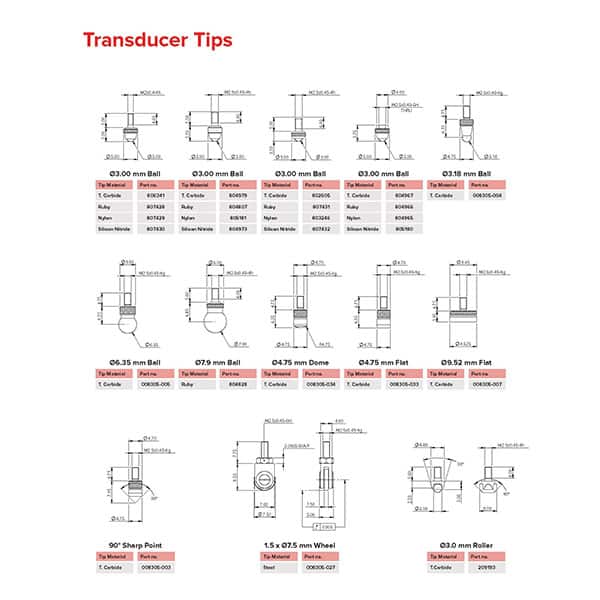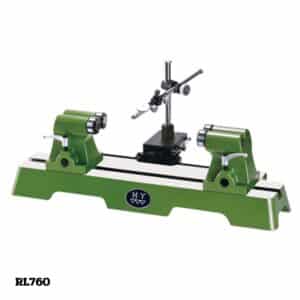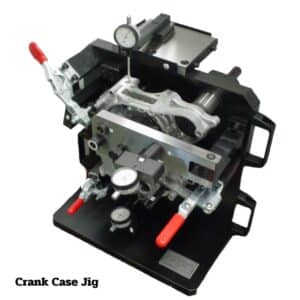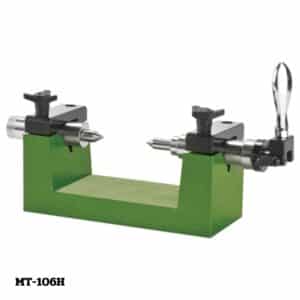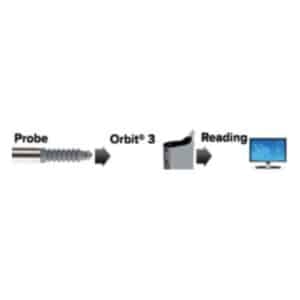Diameter Probe
Exploring the World of Diameter Probes: Precision in Measurement
Diameter probes are invaluable tools in the field of metrology and precision manufacturing, specifically designed for measuring the diameter of cylindrical objects with exceptional accuracy. This comprehensive guide delves into the intricacies of diameter probes, their applications, working principles, types, and the pivotal role they play in ensuring the quality and precision of machined components.
Introduction to Diameter Probes
Diameter probes are specialized measuring instruments employed in manufacturing and quality control processes to ascertain the diameter of cylindrical workpieces. These probes play a critical role in industries where precise diameter measurements are essential for meeting stringent design specifications.
Working Principles of Diameter Probes
Diameter probes operate on fundamental principles of contact measurement. The key working principles include:
- Contact Measurement: Diameter probes physically contact the surface of the cylindrical workpiece to gather measurement data. The contact is typically triggered manually or automatically based on the programmed inspection routine.
- Deflection of Probe Elements: The diameter probe consists of probe elements that deflect upon contact with the workpiece. This deflection is then transformed into electrical signals, providing accurate information about the diameter of the measured object.
- Coordinate Measurement: Integrated with coordinate measuring machines (CMMs) or other precision measurement systems, diameter probes collect data points that are crucial for creating a precise digital representation of the workpiece’s diameter.
Types of Diameter Probes
Various types of diameter probes cater to specific measurement needs. Some common types include:
- Single-Point Diameter Probes: These probes are designed for precise point-to-point diameter measurements. They are suitable for applications where discrete diameter data points are critical.
- Scanning Diameter Probes: Scanning probes are equipped with a continuous scanning mechanism, allowing them to collect data points along the entire circumference of the cylindrical workpiece. This is beneficial for capturing variations and irregularities in the diameter profile.
- Non-Contact Diameter Probes: Some diameter probes use non-contact methods such as laser or vision systems to measure diameters without physical contact. These are ideal for delicate or sensitive surfaces where contact may not be feasible.
Applications of Diameter Probes
Diameter probes find applications in various industries where precise diameter measurements are paramount. Some common applications include:
- Automotive Manufacturing: Diameter probes are used to measure the diameters of critical components such as shafts, pistons, and engine cylinders to ensure they meet design specifications.
- Aerospace Industry: In aerospace manufacturing, where tight tolerances are crucial, diameter probes play a vital role in verifying the diameters of shafts, bearings, and other cylindrical components.
- Medical Device Manufacturing: The medical industry relies on diameter probes to ensure the accuracy and quality of components used in medical devices and implants, where precise fits are essential.
- General Manufacturing: Diameter probes are employed in general manufacturing processes to verify the diameters of a wide range of cylindrical components, from bolts and nuts to hydraulic cylinders.
Advancements in Diameter Probes
As technology advances, diameter probes continue to evolve. Some notable advancements include:
- High-Speed Scanning: Modern diameter probes can perform high-speed scanning, allowing for rapid data acquisition and increased efficiency in the measurement process.
- Enhanced Connectivity: Diameter probes are increasingly equipped with advanced connectivity features, enabling seamless integration with digital systems for data analysis, reporting, and real-time monitoring.
- Increased Automation: Automation features, such as automatic probe changing systems and programmable routines, contribute to the efficiency and repeatability of diameter measurement processes.
- Improved Materials and Design: Advancements in materials science and probe design contribute to increased durability, reduced wear, and enhanced accuracy in diameter measurement.
Future Trends in Diameter Probes
Looking ahead, diameter probes are likely to witness further advancements, including:
- Integration with Industry 4.0: Diameter probes will become integral components of Industry 4.0 initiatives, with increased connectivity, data sharing, and real-time monitoring.
- Artificial Intelligence (AI) Integration: AI algorithms may be incorporated into diameter probes to enhance data analysis, pattern recognition, and decision-making during the measurement process.
- Miniaturization: There is a trend toward miniaturization of diameter probes, allowing for measurements in tight spaces and on small-scale components.
- Smart Probing Systems: Probing systems with embedded sensors and feedback mechanisms will provide real-time information about the condition of the probe, ensuring reliability and accuracy.
Conclusion
In conclusion, diameter probes are indispensable tools in precision manufacturing and quality control. Their ability to accurately measure the diameter of cylindrical objects ensures that machined components meet the exacting standards of modern industries. As technology continues to advance, diameter probes will play a vital role in shaping the future of metrology and quality assurance, contributing to the production of high-quality, precise, and reliable products.
[Opening shot of a manufacturing facility]
Narrator (Voiceover): “In the world of precision manufacturing, where every dimension matters, diameter probes take center stage.”
[Cut to close-up shots of different types of diameter probes]
Narrator (Voiceover): “These specialized instruments are the key to ensuring that the diameter of cylindrical workpieces meets the stringent requirements of modern industries.”
[Cut to animated graphics illustrating the working principles of a diameter probe]
Narrator (Voiceover): “Operating on the principles of contact measurement, diameter probes provide accurate and reliable data about the diameters of machined components.”
[Cut to footage of diameter probes in action on a coordinate measuring machine]
Narrator (Voiceover): “Integrated with coordinate measuring machines, these probes contribute to the creation of precise digital representations, ensuring the quality and precision of every machined product.”
[Closing shot of a perfectly measured cylindrical component]
Narrator (Voiceover): “In the pursuit of perfection, diameter probes stand as guardians of precision, shaping the future of metrology and quality assurance.”
[Fade out to black]


